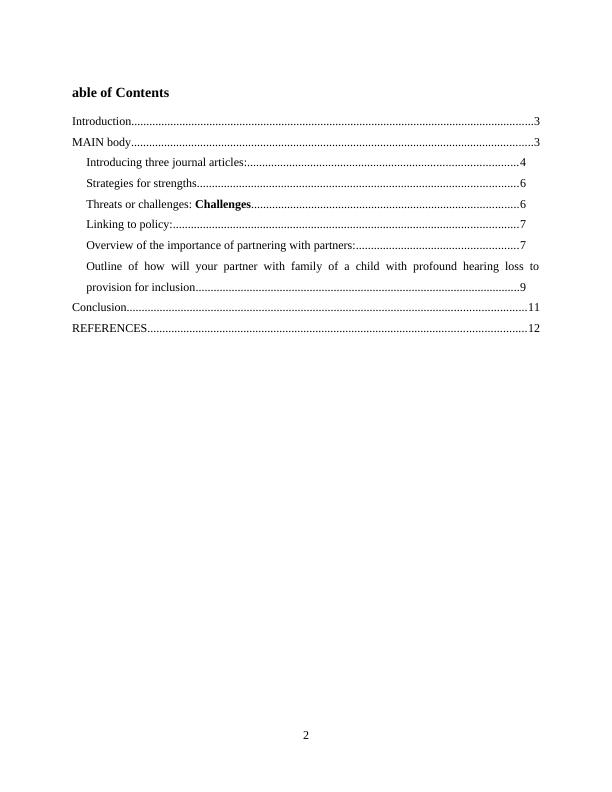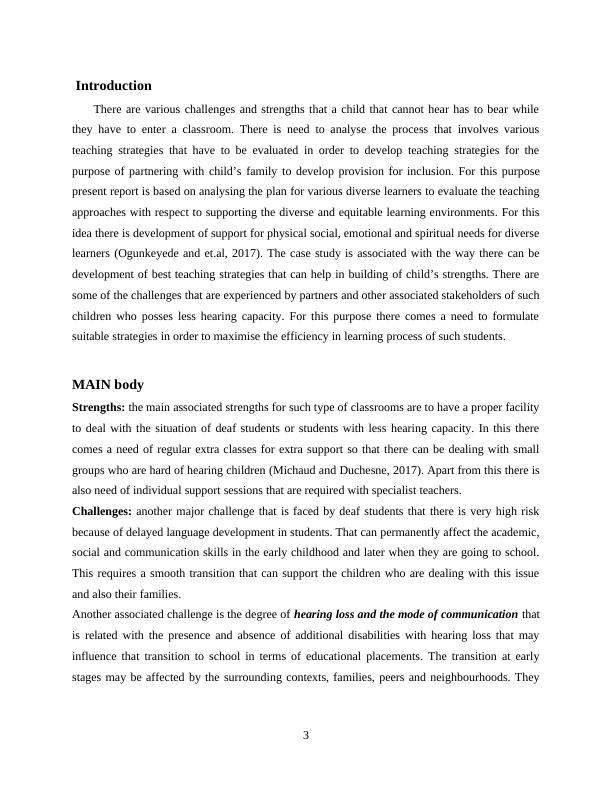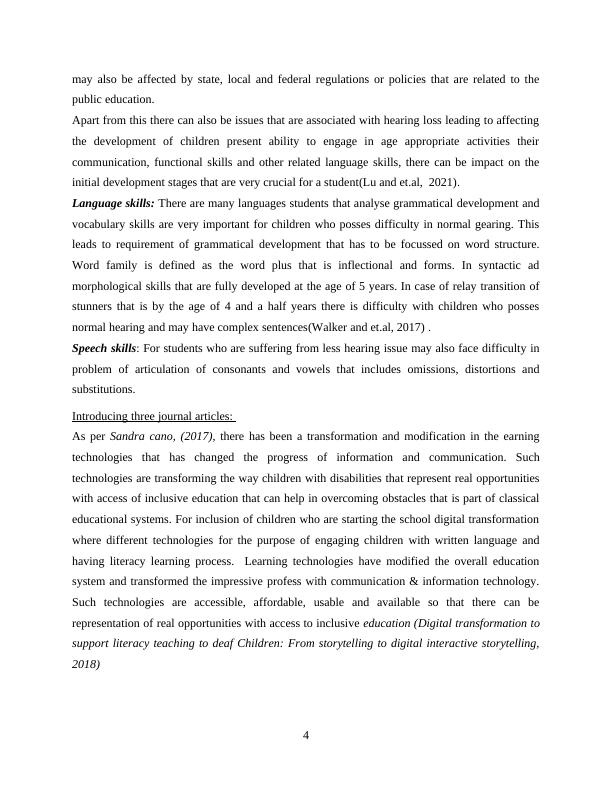Supporting Diversity and Equity in Education
Investigate how to support a child with profound hearing loss in transitioning to school, analyze readings on teaching strategies, and outline family partnership for inclusion.
12 Pages3777 Words286 Views
Added on 2022-11-25
About This Document
This document discusses the challenges and strengths of supporting diverse and equitable learning environments in education. It explores strategies for partnering with families of children with hearing loss to develop inclusive provisions. The document also highlights the importance of language and speech skills in students with hearing impairments. It includes three journal articles on digital transformation, virtual learning environments, and the transition from early intervention to school. Overall, it provides insights and resources for supporting diversity and equity in education.
Supporting Diversity and Equity in Education
Investigate how to support a child with profound hearing loss in transitioning to school, analyze readings on teaching strategies, and outline family partnership for inclusion.
Added on 2022-11-25
ShareRelated Documents
End of preview
Want to access all the pages? Upload your documents or become a member.
Children's Behaviour Assignment
|9
|514
|132
Teaching Strategies for Diverse Learners
|9
|2711
|500
Guidance Approach to Teaching: Creating a Nurturing Environment for Early Childhood Development
|4
|778
|204
Educational Handout Report 2022
|6
|567
|21
Australian Professional Standards for Teachers
|22
|883
|256
Inclusive Practice in Education: Features, UDL, and Collaboration
|15
|5567
|160




